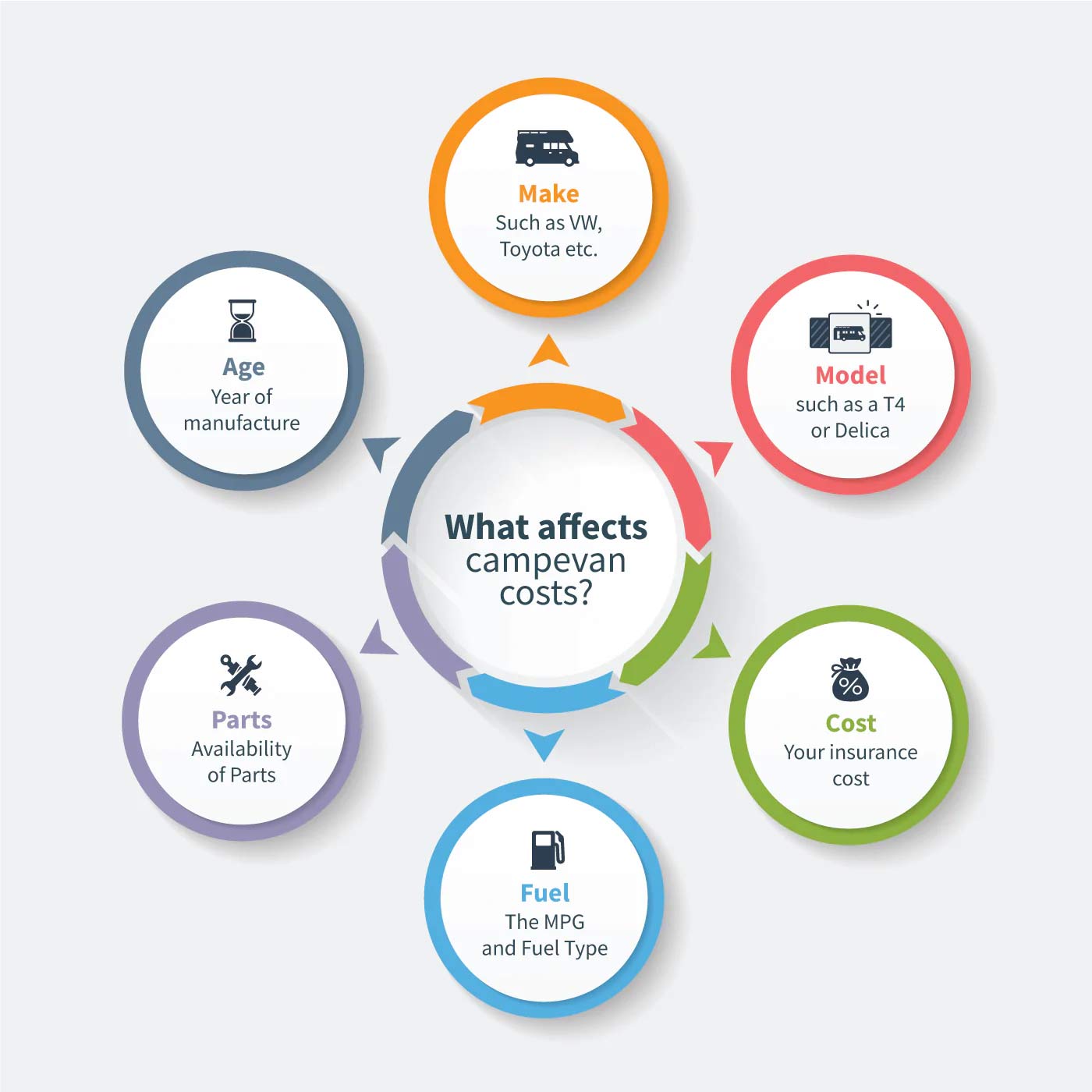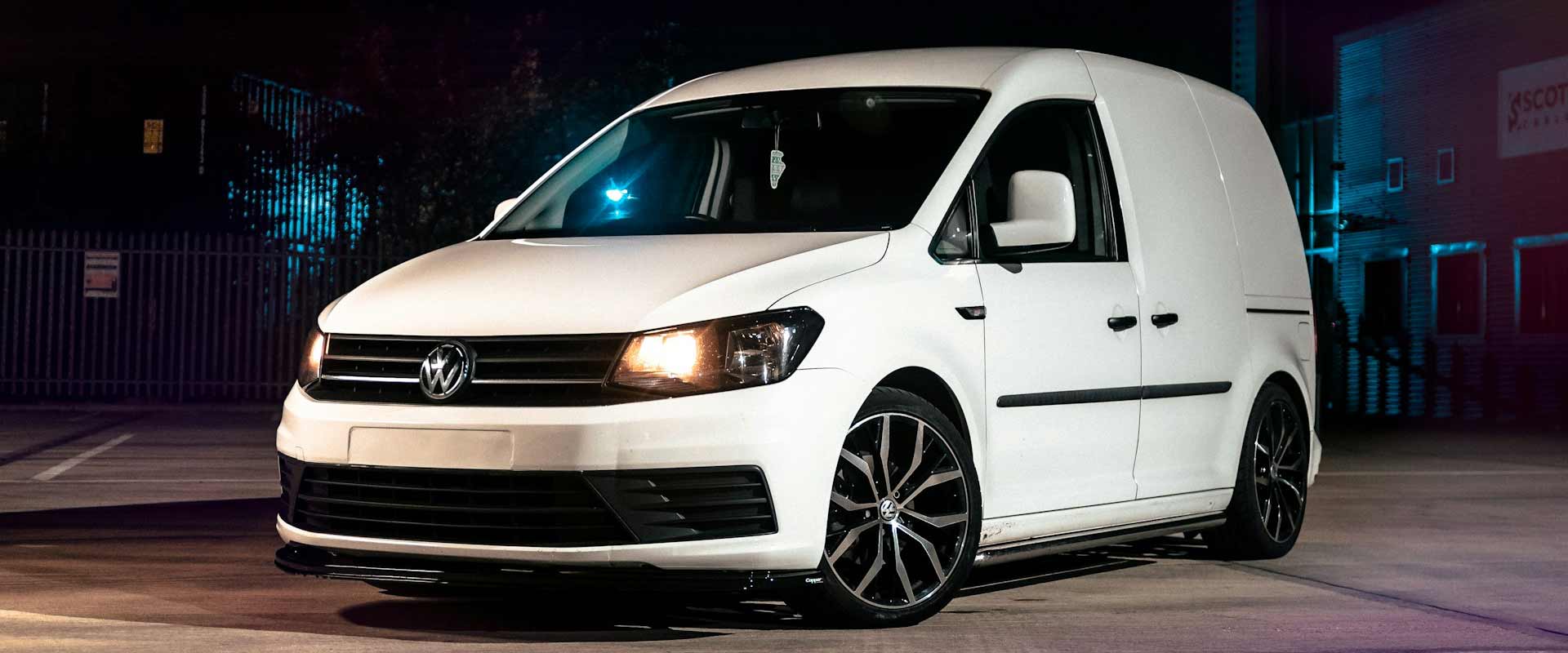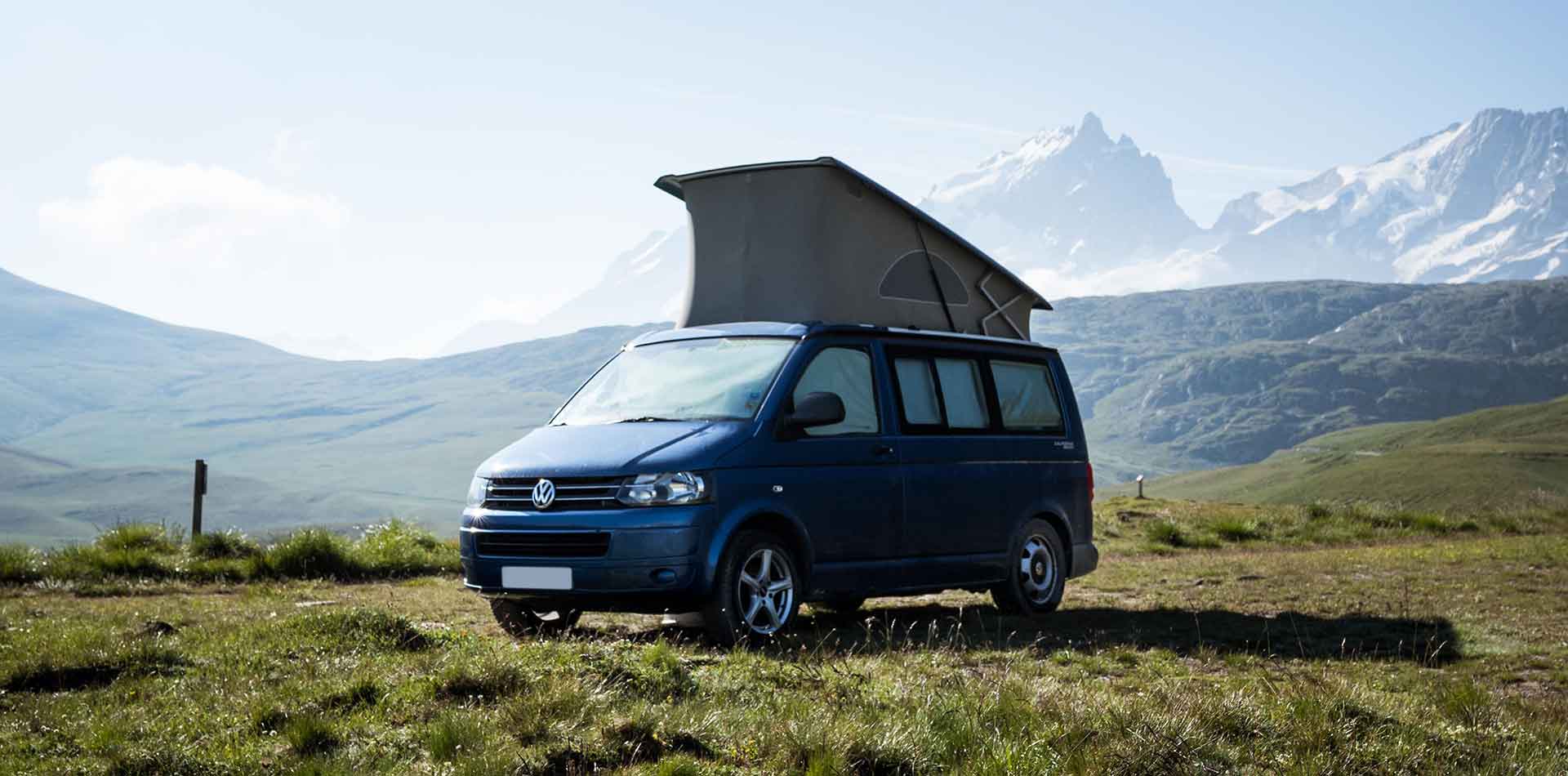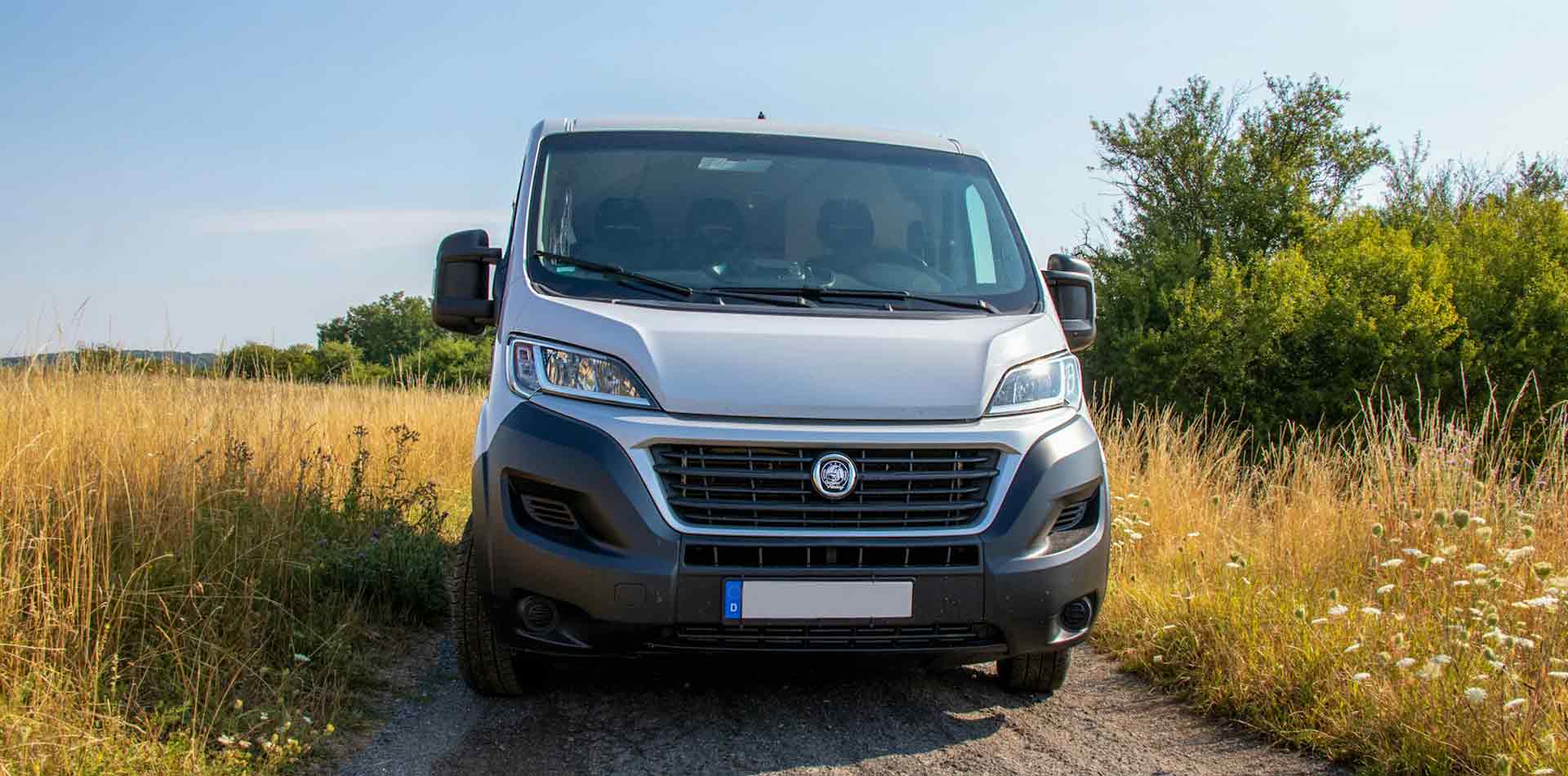This guide explores some of the most affordable campervan options in the UK, for budget-conscious vanlifers. From compact micro campers to spacious panel vans, we’ll help you find the ideal van for your dream campervan.
For many years, campervans have been a popular way to explore the UK’s landscape, from the stunning Scottish Highlands to the scenic coast of Cornwall. The appeal of vanlife has continued to grow, and so has the market for van conversions.
But for those looking to buy and convert a van on a budget, knowing where to start can feel overwhelming.
With so many models to choose from, we’ve put together a list of some of the more affordable vans you can buy for a DIY camper conversion, helping you find the van that best suits your needs.
Jump to:
- Citroën Berlingo
- Volkswagen Caddy
- Nissan NV300
- Renault Trafic
- Ford Transit Custom
- Volkswagen T5
- Fiat Ducato
What makes a campervan affordable?
There are several factors that determine whether a campervan is affordable. Buyers should consider the make and model, running costs, insurance, age, and overall condition of the van – all of which can influence the price.
While some vans may have a lower upfront price, ongoing expenses such as repairs, fuel efficiency, and maintenance can quickly add up, as well as the conversion costs on top. More often than not, finding the right balance between the price and condition of the vehicle is key to getting the best value for money.

The Citroën Berlingo is one of the most affordable options for van lifers at the time of writing. Originally designed as a compact panel van for local deliveries, its good fuel economy and easy mobility makes it a good base for a small camper conversion.
Why should you buy a Citroën Berlingo?
Unlike larger vans, the Berlingo handles like a car, making it ideal for both narrow country lanes and city parking. It also has good fuel efficiency, making longer road trips more affordable. Although compact, the boxy shape of the Berlingo provides enough interior space for beds, storage units, and even mini kitchenettes. Its unassuming exterior also offers an advantage by making it more discreet than other campervans.
The downsides of a Berlingo
The compact size does however mean it’s probably best suited for solo travellers, due to the limited space inside. It’s not tall enough to stand up inside, so you may find it’s a little too cramped for longer trips. A Berlingo also has a lower payload capacity compared with other campervan models, so you’ll need to be cautious with the facilities or appliances you install to ensure they do not exceed the weight limit.

The Volkswagen Caddy is a small but capable van, which has seen an increase in popularity in the vanlife scene for its practical and dependable nature. Originally intended for use as a work van, the Caddy is the smallest van in VW’s range, making it ideal for those wanting a simple, easy-to-drive camper conversion. With good build quality and impressive longevity, it’s a budget-friendly option that doesn’t compromise on reliability.
Why Buy a VW Caddy?
They are cheaper than a lot of other vans, which make them a contender for those wanting a camper conversion project on a budget. The Caddy’s diesel engines also offer impressive miles per gallon, keeping the travel costs minimal. Its compact size makes it easy to drive and park just about anywhere, and with some clever planning, there’s just enough space for some simple living facilities, such as a fold-out bed and slide-out kitchenette. With a good reputation for durability, a well-maintained Caddy can keep going for hundreds of thousands of miles.
The downsides of a VW Caddy
Like most small vans, the Caddy doesn’t have room to stand up. This can be problematic for some, especially when venturing on longer trips or travelling more frequently. Much like the Citroën Berlingo, you’ll need to be aware of the weight you’re putting inside, to avoid exceeding the payload limit. Similarly, this van may be suitable for individuals, but it’s likely to be too cramped for more than one person.
The Nissan NV300 is a mid-size van that makes a great starting point for a campervan conversion. It’s a reliable workhorse with a good amount of interior space, making it ideal for vanlifers who want to avoid the hassle of full-size courier vans. The NV300 has decent fuel economy and is often cheaper than some of the other mid-size vans on the market, making it good value for money.
Why buy a Nissan NV300?
The NV300 is surprisingly spacious inside, making for a more comfortable conversion. It has enough space for a bed, kitchenette, seating area, and storage, making it a versatile option for full-time van life or long get aways. The diesel engines offer great fuel economy for the size of the van, which also helps to keep costs down.
The downsides of a Nissan NV300
While the NV300 is reliable, it’s not as popular as other models like the VW Transporter, meaning aftermarket support is more limited. This could make sourcing parts and conversion a bit trickier. Although it offers plenty of space inside, the standard van isn’t tall enough to stand in without a pop-top roof modification, which may be uncomfortable for extended trips.
The Renault Trafic is a versatile, practical, and affordable mid-size van that has become a common choice for campervan conversions. The Trafic shares its fundamental platform with the Nissan NV300 mentioned above, providing good interior space and manoeuvrability.
Why buy a Renault Trafic?
The boxy shape of the Renault Trafic creates a comfortable camper layout, providing enough space for essential facilities like a bed, kitchen, and storage. As one of the more affordable mid-size vans on the market, it’s a great choice for buyers restricted by a budget. Plus, with so many of them on the road, they are easy to maintain, and parts are widely available.
The downsides of a Renault Trafic
While the Renault Trafic is a practical and budget-friendly option, some may say it lacks the iconic campervan appeal of other models. Like the Nissan NV300, there isn’t enough space to stand up inside, so you may need to add a pop-top roof to your list of conversion tasks if you’re choosing this van. While they’re generally reliable, some older models have experienced turbo-related issues, so it’s worth checking the vehicle’s service history before buying.
The Ford Transit Custom is currently one of the most popular mid-size vans on the market known for its practicality. It provides a great balance between comfort and affordability, making it a solid choice for a campervan conversion. Whether you’re planning some weekend getaways or long-term van life, this is a budget-friendly option that has many advantages.
Why buy a Ford Transit Custom?
Transit Customs are easy to drive, handling more like a large car than a van. Like other mid-size vans, they provide plenty of room for a comfortable layout, making it easy to fit in necessities like a bed, kitchen, and storage areas. Ford Transit Customs are commonly used for camper conversions, making it easier for you to find parts, accessories, and useful resources throughout your build.
The downsides of a Ford Transit Custom
While this is a practical and affordable van, it doesn’t have the same appeal or strong resale value of other models, like the VW Transporter. Most Transit Customs don’t offer full standing height, so you may need to install a pop-top roof if this is something you require. Also, older models (2013-2016) have experienced some reliability issues with engine components, so it’s always a good idea to look out for a well-maintained van with a good service history.

The VW Transporter is one of the most well-loved campervan bases out there. Here, we’re focusing on the VW T5 model specifically, which offers many of the benefits of the newer T6 but at a more budget-friendly price. Produced between 2003 and 2015, the T5 is easy to drive, and well-suited for camper conversions. With extensive aftermarket support and a dedicated community of VW vanlifers, it remains a top contender for those looking to build their dream campervan.
Why buy a Volkswagen T5?
VW vans have a long-standing heritage in the camper world, and while they tend to be a little pricier than other vans of their size, they hold their value exceptionally well. The T5 feels comfortable and refined, handling much like a large car, which is ideal for long road trips. Despite its compact size, the T5 offers a spacious interior for a well-designed conversion, with enough room for all your essentials. Thanks to its positive reputation in the campervan community, there’s no shortage of aftermarket parts, accessories, appliances, and storage solutions, making it easy to customise the van exactly to your needs. With the right care, a well-maintained T5 can go on for hundreds of thousands of miles, making it a great investment.
The downsides of a Volkswagen T5
The VW T5 retains its value far better than many other vans, which is great for resale but also means it tends to be more expensive to buy than other alternatives. While it provides a good mix of manoeuvrability and practicality, it doesn’t have quite as much interior space as larger vans. This might be a drawback for those planning full-time vanlife or family travel, but as a mid-size camper, the T5 is a fantastic choice.

The Fiat Ducato is a large, budget-friendly van that has been widely used for campervan conversions, particularly for families or for those wanting to maximise living space. With good reliability, and a lower price tag than some of its rivals, the Ducato offers a great campervan base for a reasonable price.
Why buy a Fiat Ducato?
The Ducato is one of the widest panel vans available, providing plenty of living space and a comfortable layout, plus good headroom for standing. They can also be slightly cheaper to buy and maintain than several other vans, such as the Mercedes Sprinter or VW Crafter, making it an ideal option for those on a strict budget. Fiat Ducatos are commonly chosen for campervan conversions, as their shape and size allows flexibility for customised builds.
The downsides of a Fiat Ducato
For some, the Ducato is more practical than it is stylish, but this ultimately comes down to personal preference. While its spacious interior makes it a versatile campervan base, the larger size can make driving and parking more challenging, especially in urban areas. Older models, particularly the MK3, have experienced some mechanical issues, including steering rack problems, so it’s a good idea to check the service history of the van before purchase.
What else do I need to know before buying affordable campervans?
How affordable are VW campervans?
VW campervans hold their value well, but they are usually more affordable than you think. If you’re open to any generation, you can find a VW camper starting at around £5,000.
The cheapest options are the T25 and T4 models, but they may require additional repairs due to their age, adding to the cost. Spending just a little more for a VW T5 can be a smart investment, offering better reliability and lower maintenance expenses compared to older models.
How cheap are older models vs newer campervans?
Older campervans can be significantly cheaper to buy than newer models. However, they do often come with more risk of expensive repairs and maintenance, and sourcing parts may be more challenging.
If the model is over 40 years old, it won’t require an official MOT, but it’s worth regularly servicing for reliability and peace of mind.
Is it cheaper to buy a converted campervan?
Generally, no. Even for self-built campervans, the cost of parts, materials, labour, and tools all add up, increasing the overall value of the vehicle. A good-quality conversion for a classic model can cost upwards of £40,000, with newer vans costing even more.
Which is the most affordable campervan?
It really depends. Affordability isn’t just about the initial purchase price – it depends on long-term costs too. While a T25 or T4 may be cheaper to buy, repairs and maintenance costs can add up quickly, potentially costing more than a newer camper conversion which also comes with a manufacturer’s warranty.
The price will also vary depending on the size of the campervan. Small campers such as the VW Caddy are more affordable than mid-size or large vans, but they may not be suitable for your needs.
When thinking about long-term affordability, consider specialist campervan insurance, fuel economy, MOTs and servicing, availability of parts, and maintenance costs.
At Just Kampers Insurance, we’ve been providing specialist campervan insurance since 1998. Whether you own a self-built camper, a classic model, or a modern van, we’re here to help.
